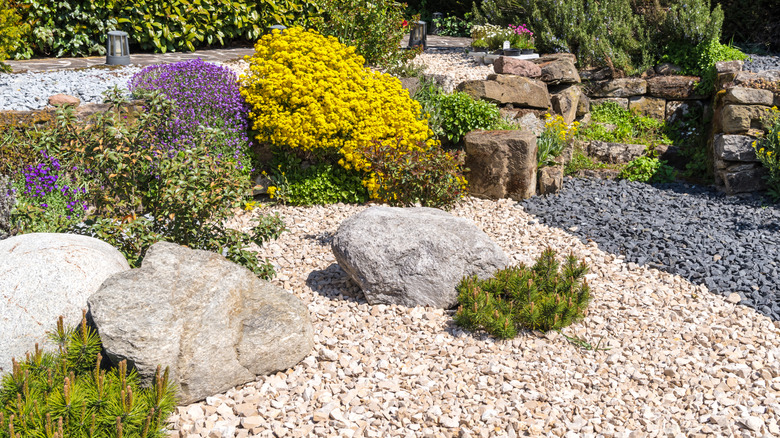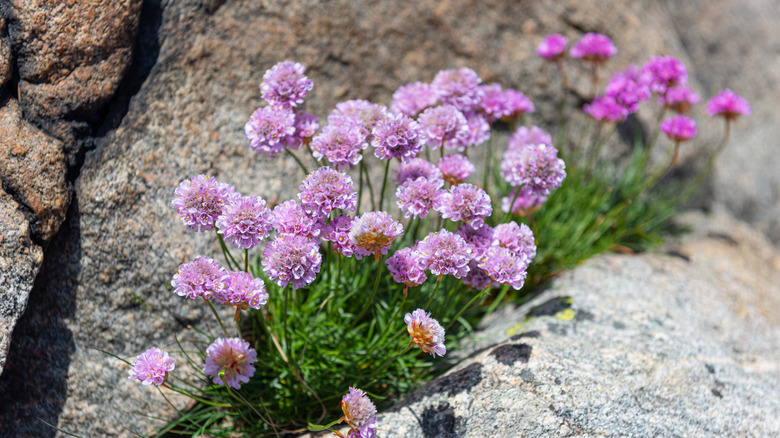The Colorful Flowering Plant That Will Thrive In Your Gravelly Rock Garden
When you're dealing with difficult sites, like a gravelly rock garden with poor soil, it can be challenging to find plants that will thrive under the conditions and also produce attractive flowers. Lucky for you, there's one colorful flowering plant that is going to delight you with its outstanding display, even when grown in less-than-ideal situations. This little stunner is commonly known as sea thrift (Armeria maritima) and it's definitely worth adding to your collection, especially if you already have a selection of plants that grow well in shallow soil.
Sea thrift is a mounding perennial with lovely thin, dark foliage and very showy pom-pom shaped flower heads in pink or white. Its blooms will appear en masse over spring and summer and add some gorgeous color to your rock garden. Not only are these flowers quite eye-catching, but they'll also attract butterflies to your yard. You'll find that when not in bloom, this species still enriches your landscape with its lush green leaves. It can handle some salt spray as well, making it one of many flowering plants that thrive near the coast. Sea thrift grows best in USDA hardiness zones 4 through 8.
Everything you need to know to grow sea thrift in your rock garden
You can grow this tough little plant in full sun or even part shade. The most important thing to remember is that sea thrift needs excellent drainage and does particularly well in sandy or rocky soils. In fact, areas with low fertility are best because too much moisture or an overabundance of nutrients will result in the center of the clump rotting out. So, this is one species you don't want to kill with kindness by giving it too much water or fertilizer. Once it's growing well in your yard, the only thing you might want to do is deadhead the spent blooms.
In seasons where you may have a lot of rainfall or humidity, you'll probably find that sea thrift will start to experience decline in the middle of the clump. When this happens, cut the plant back quite hard. It's a good idea to then dig it up and divide it into smaller plantlets. Discard the inner parts that have succumbed to rot and replant the outer sections that are nice and healthy. It's best to do this in early spring, and you definitely shouldn't prune sea thrift in the fall — late-season pruning could keep the plant from blooming the following year. To add some extra interest, consider exploring other beautiful perennials for your sunny rock garden.

